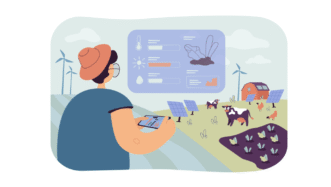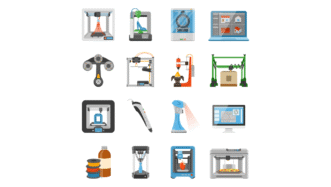LESSON OVERVIEW
This ESL lesson about design focuses on how nature inspires creation of new things. Students learn some vocabulary to describe the design of things, watch a video and have a lot of brainstorming and speaking practice.
C2 / Proficiency60 minStandard LessonPremium Plan
WARM-UP & VOCABULARY
The worksheet starts with a discussion. Students talk about product designers, their skills, and brainstorm features of well-designed products. This ESL lesson about design is also supplemented with useful vocabulary. Students look at some words (e.g. angular, crooked, intricate, sleek, etc.) and answer the questions using them. Then, they put the vocabulary into practice by describing the things in the pictures (a chair, a car, a building, a tea set). Students have to discuss what the strengths and weaknesses of each design are.
VIDEO & DISCUSSION
In this part of this ESL lesson about design students watch the video and learn how nature inspires designers. First, students discuss a couple of questions and learn the term ‘mimicry’. After that, they watch the first part of the video and answer more questions (e.g. about biomimicry and how it helps to solve problems). Then, they look at three pictures (lotus leaf, ants, forest) and match them to the things they inspired (autonomous cars, building paint, economic system). Students also have to justify their answers. After that, they watch the rest of the video and check their ideas. Students move on to more speaking activities. First, they read some statements, choose the ones they agree with and explain their answers. Then, they look at more inventions and try to guess what element of nature might have inspired them. As a wrap-up activity, students look at two items (a white t-shirt and fairy lights) and discuss them in terms of their design. They talk about problems with them and how they could be solved using biomimicry.
Subscribe to unlock these and many other Standalone lesson with the Premium planWORKSHEETS












Hi! Unlimited subscriber here. I loved this lesson, as did my teenage students. One thing they remarked on was the amount of paper used – I try to print things in a way that minimises paper and ink usage, but there are still a lot of gaps and it could be compressed more. Otherwise, thank you so much for the awesome content! – Samantha
Great to hear that your students enjoyed this lesson! In terms of the unused white space in pdfs, we tried to compress the text and pics but the results were poor as too many pics and text together were making the pdf look unclear. We always want to limit the number of pages when possible but we always put priority on clarity and legibility, especially in SVs.
Hi! I’ve just used this with my online group of C1/C2 adults. At the end, they said that they had really enjoyed it and wanted a link to the video so that they could watch it again. It’s an unusual topic and they enjoyed the challenge of discussing the different ways in which product design mimics nature. Thank you very much!
Sarah
Hi Sarah!
We’re so happy you and your students liked the lesson. Thank you for your feedback:)
What an amazing lesson! I found it highly engaging and very well put-together. Thank you very much!
Hi:)
Thank you. It’s always a pleasure to hear that our users like the content:)
Homework idea:
You have two options for this homework:
Choose one household product that you can improve using biomimicry – food sticking to pans for example.
Research a product that uses biomimicry in its design and write how biomimicry was used to design them.
Please write at least 150 words and include an introduction and conclusion.
Nice HW ideas! Thanks for sharing them, Audra!
Great suggestion! I just did this lesson with my student and was wondering if there were any follow up ideas with the lessons – as I am new. This would be a great thing to ESL Brains to add to the lessons – one or two homework options
Hi Kelly,
We do add revision and homework activities to our new lesson plans, but this lesson is one of the older ones so there’s no follow up included. However, you can check a comment by Audra Larsen above. She suggested two homework options you might find useful:)
Hi there, I think it’s time to update the last activity. The headphones with cables are now a thing of the past! We solved that problem!
Hi Audrey! Thanks for taking the time to comment! You’re right that the headphones problem has been solved, so we’ve just updated the worksheet by replacing them with something similar, namely fairly lihts. I guess it’s the problem we still struggle with and students might have a lot of fun coming up with possible solutions 🙂
This is one of the most engaging lessons I have ever come across – it’s such a delight to teach! Every student has remarked how much they’ve enjoyed it. More like this please! 🙂
Wow! Thanks for taking the time to share your feedback with us! We’re delighted to hear that the lesson is so engaging and well-received 🙂